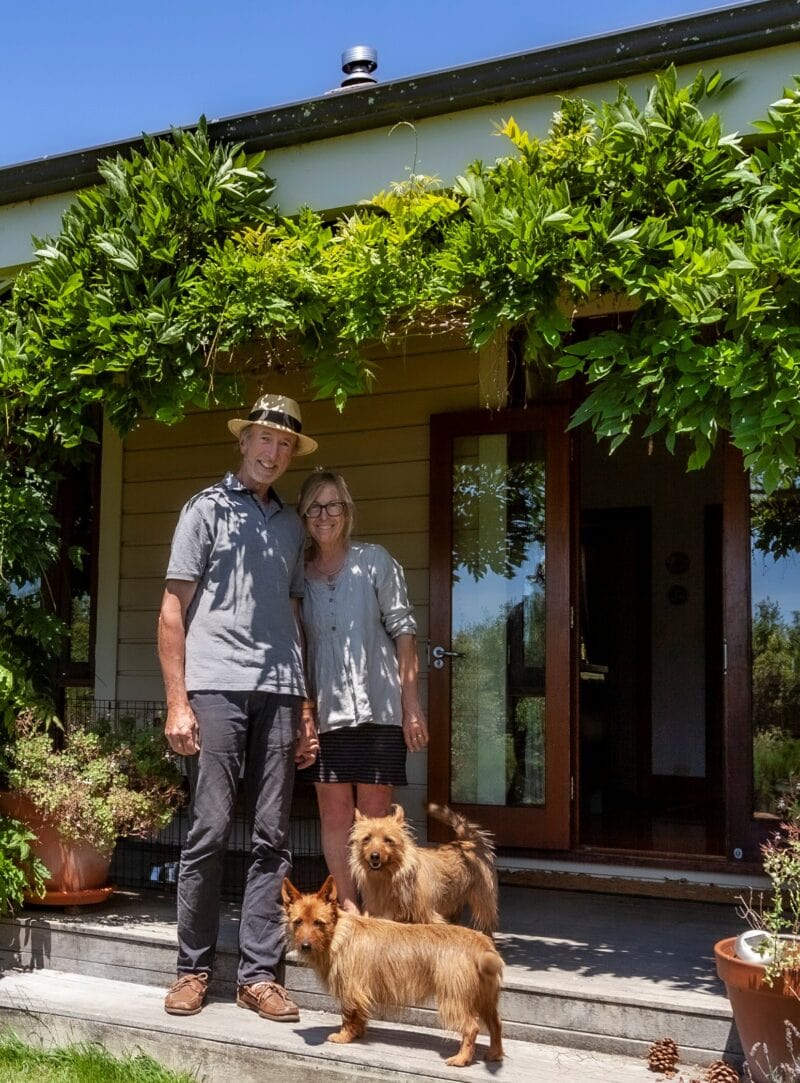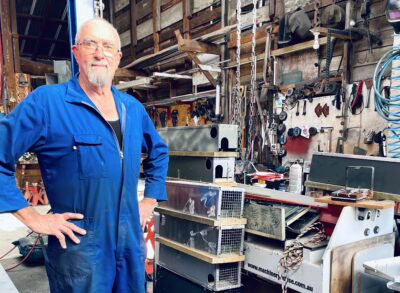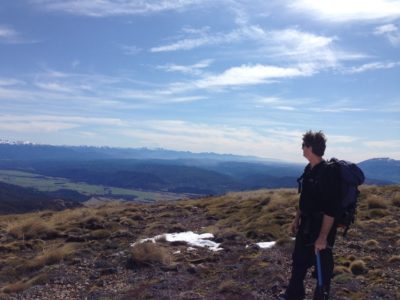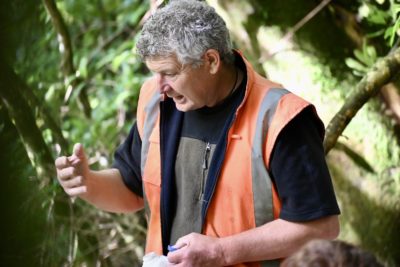Fiona del Bosco and Alastair Wilkinson own Lancewood Villa, an eco-retreat in the Upper Moutere. They’re in the process of converting eight of their 12.5 hectares into native plantings—and all without using sprays.
Where are you both from originally?
Fiona: I grew up in Richmond and went to Richmond School, Henley School, Waimea Intermediate, Waimea College and Nayland college. I lived in Golden Bay for 11 years and Totaranui for two and a half years, so I’m pretty local!
Alastair: I’m from a long way away—Christchurch and Wellington are my home towns, I suppose. We’d been [living] overseas and we came back just over 10 years ago. My parents were in Kaikoura at the time, and Fiona’s parents were still in Golden Bay. So that’s why we moved to this part—it was strategically located between the two sets of parents.
What did you do before buying Lancewood Villa?
Fiona: We were living in different countries. I was in North Queensland, working at James Cook University’s School of Education as a mathematics education specialist.
Alastair: I worked for the United Nations in Fiji. I was totally on the go around the Pacific all the time and it wasn’t very conducive for partners, so Fiona ended up teaching in Townsville.
Fiona: We racked up a lot of air miles.
We know that we’ve done our fair share of contributing to the climate change emergency crisis, so we feel morally bound to actually be doing something active about it.
Alastair: We’re trying to take out some of that carbon that we put in the atmosphere [from] flying all the time.
When did you buy the property?
Alastair: In April 2010 but we couldn’t extract ourselves from our jobs until late November 2010. So Fiona’s whānau looked after the property for all those months.
Fiona: What we loved about the property was the little forest remnant on it. That was on our tick sheet—to have a bit of native forest.
You’re putting eight of your 12.5 hectares back into natives? That’s a lot.
Fiona: Yes, that’s quite a chunk of land. Farmers around here say we are retiring it. Personally, I think we’re completely rejuvenating, rebirthing this land, not retiring it! That’s what they say because we’re not going to be making a profit from it. We’re not going to be milking this bit of Mother Earth to within an inch of her life.
We are restoring this land very, very lovingly.
Does that mean your neighbours aren’t supportive of what you’re doing?
Fiona: To be honest, I think they think we’re pretty nutty! But we’re now part of the Moutere Catchment Group and so there’s an awareness [in the community] of how interconnected we are, especially with our waterways.
Alastair: There’s another group that we’ve been a part of, the Native Habitat Owners group. These are people with little patches of native bush who get together and look at what everyone’s doing and get inspired by each other. So there are neighbours around who are doing similar things to us, maybe not quite so extensively, but they’re out there planting forests, or expanding their little patches. In the early days especially, that was quite inspiring for us to meet some of these people.
Fiona: We had a dream about seeing a community nursery being built here, so we started our own. And we wanted to see the whole of the Moutere Stream being planted up. That was a bit of an ambitious dream but it’s beginning to happen. So even within 10 years that [initial] resistance is dissolving.
What got you into permaculture?
Alastair: When we first got here we came from pretty far behind the eight ball because we’re both social scientists, not agriculturalists and botanists, although Fiona had a good botany background. We searched around and found a local guy, Charlie Goulter, who was advertising himself as a permaculture consultant. He came along, had a look at the place and did a permaculture plan for us. And that’s how it started, because we’re not keen on using sprays. I was never keen on that.
We had this strange ambition, sitting in our respective jobs, thinking, Before we get too old we want to have another career. And so this is it. That’s why we left our jobs early.
You’re taking an organic/permaculture approach to the restoration—what does that mean?
Fiona: All the things we’re doing are without spraying and massive machinery intervening. We’re just two little old peasants chipping away but our commitment is to doing no harm to this land, no more harm, and we can see that sprays are tremendously harmful. We did start off trying to be proper farmers and we would burn heaps of branch prunings, all that kind of stuff. We’re not doing any of that now; it’s all composted. So we have changed.
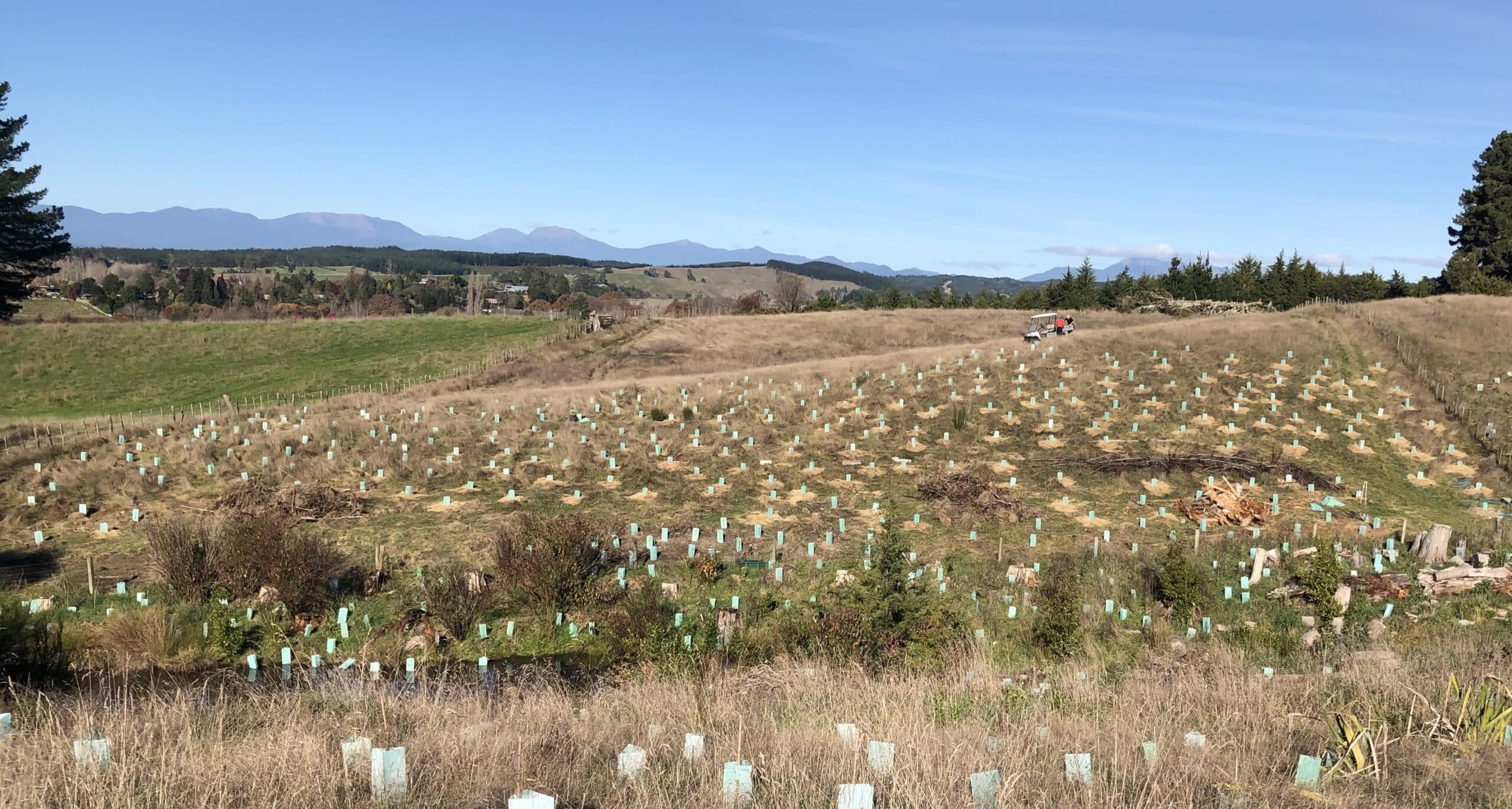
We have gorse growing on this property, we have broom, we have Acacia. So we look at some of these so-called weeds as actually really good, because they are the first line of conversion from pasture back to forest. They can break that hold that grass has over the land.
Grassland is primarily a sort of bacteria-based ecosystem in the soil, whereas a forest is primarily a fungal-based system. So you’re trying to make that conversion from grass to forest. And those so-called weed species—gorse and Acacia and broom—all being nitrogen-fixing, are a really good transition from the grassland because you can then plant under them without so much competition with grass.
So our farming neighbours think we’re pretty weird, valuing our gorse. It’s a bit of an issue because it’s still seen as a noxious weed, but it isn’t a noxious weed for we foresters. It’s actually brilliant.
How are you controlling the weeds around your plantings?
Fiona: When we bought the property ten-and-a-half years ago, the very first thing we did was look at this little forest remnant full of weeds. It had a massive blackberry in it, macrocarpas and banana passionfruit, holly and ivy. We could see the trees and we could see the weeds. And so we just started there.
In early 2011 we had a [QEII] covenant set up on that little piece of forest. And in 2013 we got a DOC Biodiversity Grant to plant a buffer around the forest. So that’s when we first had to start thinking about how to do this. We planted into the pasture surrounding the forest, just a buffer zone to protect what we had. And we used mulch. We used wood chip, hay, cardboard, logs lying around—anything we could find, we pressed into service to suppress the weeds around each plant. And, of course, that holds moisture in as well.
Then we’d come back and if we saw grass was going up vigorously right around the trunk of the tree, we would gently tweak that out, no spraying involved.
Those young trees would just sit there in the clay for a bit and find their feet, as we say in the Upper Moutere. And then at some point, they’d accelerate and start growing.
So we’re just there, making sure that they don’t get completely smothered. We’ve got plant guards around them. That’s so we can find them in the long grass but it also protects them from the wind.
Alastair: Outside the covenant there are rabbits and hares, so we have to put plant guards on everything outside the covenant because they don’t have a rabbit-proof fence around them.
Fiona: When we got the DOC grant, a good chunk of it went into a rabbit exclusion fence around our little bit of forest. And I can’t emphasise enough the difference that excluding hares and rabbits has made to that forest. A lot of ferns, mosses, native grasses and things like clematis, orchids… species that weren’t there when we first arrived are popping up. That rabbit exclusion fence has been an absolute game-changer.
How far along are you in your restoration planting?
Alastair: From our One Billion Trees grant, we started last winter and planted about three-and-a-half thousand or so. This winter we’re doing another lot. It’ll be a couple of thousand, probably should be more, and then we’ll go one more year.
I’m not sure whether we’ll get it finished by the end of next winter. That was the original aim. We’ve been a bit slower this winter because we couldn’t get all the plants that we wanted. So at this point, we are about one-third of the way. It’s in three blocks, we’ve done one block and we’re halfway through the next.
What are the biggest challenges you’re facing?
Alastair: The main challenge is the dry summers that we’ve had here, especially over the last three years. When we first came here, people I talked to would mention a big rainfall in the middle of summer, usually some ex tropical low that would come down through the Tasman and across Central New Zealand. The last one that happened was Cyclone Gita, three summers ago. So that’s the main challenge: to get the newly planted plants through the first one or two summers.
Ironically, we’re doing this to try to mitigate climate change, but climate change is already against us. We can see that weather patterns have already changed. So it feels a little bit like a race against time.
It’s also a challenge planting into pasture, I have to say. Grass. We have a kind of love-hate relationship with the grass. There’s good things about it. There’s also hard things about it when you come to planting into it. But we just plug away.
Fiona: One of the things we’ve learned is that you can’t assume that grass is just grass because when I’ve been planting I’ve discovered these little Isaria fungi, which are native fungi that grow on cicada larvae.
I discovered that if we had blanket spraying everywhere and then planted into a grassless area, or even scraped it off with some kind of digger, we would be destroying so much that we weren’t even aware was there. We’ve had little things like crown ferns and Lycopodiums just popping up through the grass where we have excluded browsing animals. And this is just such a joy, to discover that the grass can be harbouring all of that life. So that’s a message we’d like to get out there, to just be really aware of how brilliant the earth is at wanting to heal itself. And that the grass is actually doing a job.
Where do you see yourselves and the property in 10 years’ time?
Fiona: We would love to still be standing! Sometimes, it just seems like a moon shot kind of plan…
Alastair: Without the life raft.
Fiona: ..and we think, Why are we doing this? We keep going back to “one tree at a time”, just to scale it back and think that it’s doable.
We know it’s doable; it’s just hard. But we’ve got help from community and friends.
We would love to be able to see this through, to when even little trees have taken hold and are starting to close over and form a canopy, and the grass is busted, so we’re able to get some of those other species coming back. I’d love to get to that point in 10 years and then we’d still be here, lovingly helping it along.
Alastair: The good thing is, the trees that we put in, in 2011 and 2012—the hard beech and black beech, a few silver beech—some of those that are in good, shady, protected spots are now more than five metres tall. You can see things popping up of their own accord under some of these early plantings now, and that’s what you want.
Fiona: We would love to see some of the faunal diversity coming back, too. Not just the flora.
I’d love to see a kaka fly in and visit us. That’s what I want to see in 10 years’ time.
Alastair: Even a weka! Yeah.

